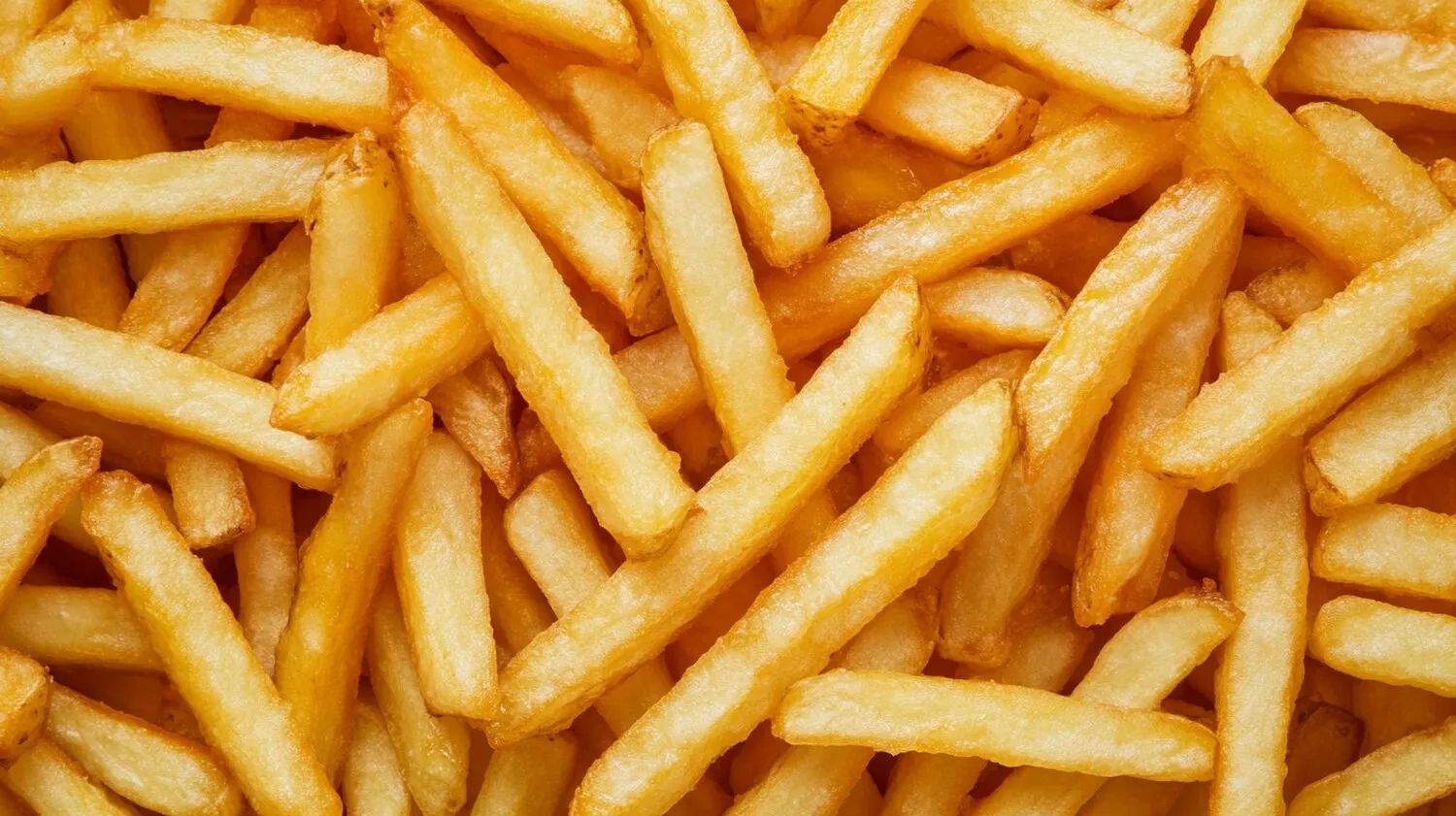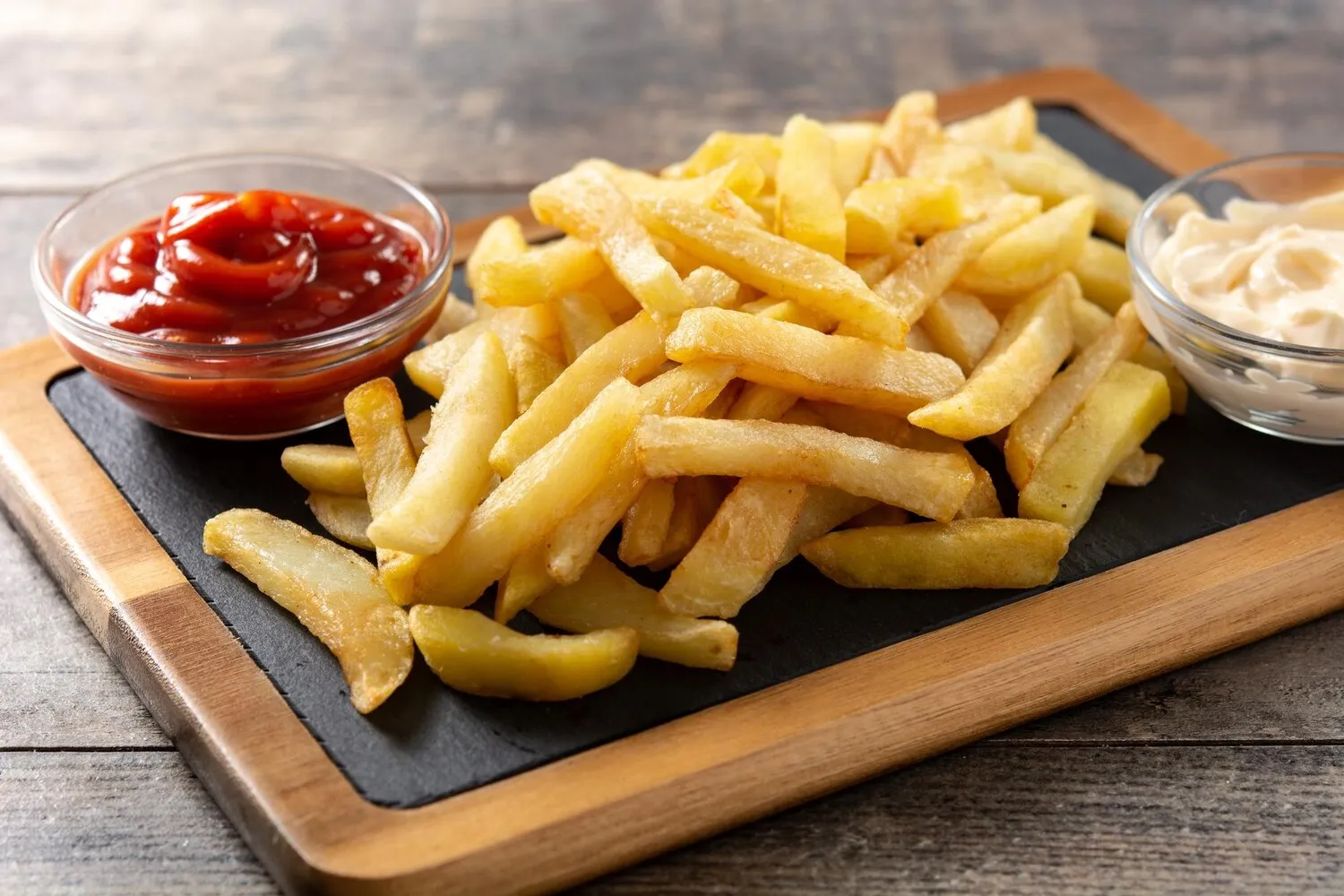
Batata Frita
French fries.
Nutrition Facts
* The % Daily Value (DV) tells you how much a nutrient in a serving of food contributes to a daily diet. 2,000 calories a day is used for general nutrition advice.
Breakpark
The exact origin of French fries is debated, with both Belgium and France claiming the title. One story attributes them to Belgian villagers frying potatoes in the winter when rivers froze, preventing them from catching fish. Another suggests they originated from street vendors in Paris before the French Revolution. Regardless, the dish gained widespread popularity during World War I when American soldiers stationed in Belgium tasted them and called them "French fries" because French was the language spoken in that region of Belgium.
French fries are a ubiquitous and globally beloved food, transcending cultural boundaries and serving as a staple in fast food, casual dining, and even fine dining establishments. They are often associated with comfort food, social gatherings, and a quick, convenient snack.
Fast Food Staple
French fries are a cornerstone of fast food culture worldwide, often served alongside burgers, chicken nuggets, and other popular items. Their affordability and convenience have contributed to their widespread appeal.
Accompaniment and Condiments
French fries are versatile and can be paired with a variety of condiments, reflecting regional and personal preferences. Ketchup, mayonnaise, mustard, vinegar, aioli, and various dipping sauces are all common accompaniments.
Variations and Regional Adaptations
While the basic concept remains the same, French fries have been adapted in various ways across different cultures. Some examples include poutine in Canada (fries with cheese curds and gravy), papas fritas in Latin America (often topped with various meats and sauces), and chips in the UK (typically thicker and served with malt vinegar).
French fries are characterized by their simple yet satisfying flavor profile: crispy exterior, soft interior, and a predominantly starchy, savory taste.
The main flavors are derived from the potato itself, which provides a subtle sweetness and earthy undertones. The frying process introduces Maillard reaction products, creating complex roasted and nutty notes. Salt is crucial for enhancing the inherent flavors and providing a balanced savory finish. The type of oil used for frying can also influence the final flavor; neutral oils like vegetable or canola allow the potato's flavor to shine, while others like peanut or beef tallow contribute their own unique characteristics. The crispness of the exterior provides a textural contrast to the soft interior, enhancing the overall sensory experience.
Potato Selection
Choose starchy potatoes like Russet Burbank or Maris Piper for optimal results. These varieties have a high starch content and low moisture, which contributes to a fluffy interior and crispy exterior.
Soaking the Potatoes
Soaking the cut potatoes in cold water for at least 30 minutes (or even overnight) helps remove excess starch, preventing them from sticking together and promoting a crispier texture.
Double Frying Technique
The double frying method is crucial for achieving the ideal texture. The first fry at a lower temperature (around 300°F/150°C) cooks the potatoes through, while the second fry at a higher temperature (around 375°F/190°C) creates the golden brown, crispy exterior.
Drying the Potatoes
Ensure the potatoes are thoroughly dried before frying. Excess moisture can cause the oil to splatter and result in soggy fries.
Don't Overcrowd the Fryer
Fry the potatoes in batches to avoid overcrowding the fryer, which can lower the oil temperature and lead to uneven cooking and soggy fries.
Explore additional Side Dish dishes and restaurants
Explore Side DishDiscover top dining spots and culinary experiences in Jacareí.
Explore JacareíLearn more about the food culture, restaurant scene, and culinary heritage of Brazil.
Explore Brazil
